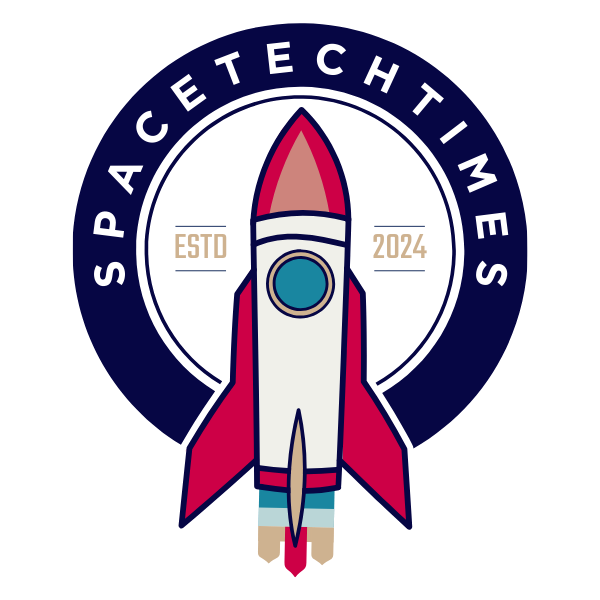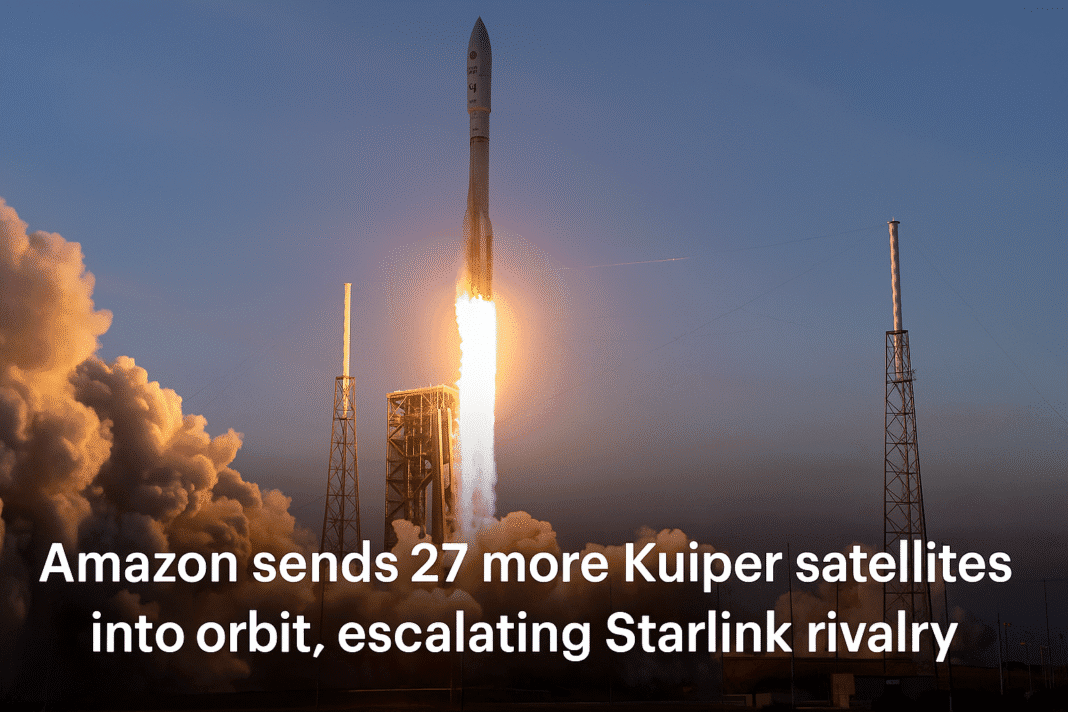Amazon has launched its second batch of Kuiper satellites into low Earth orbit, taking a significant step in its mission to create a global satellite internet network. The launch took place on Monday morning from Cape Canaveral Space Force Station in Florida.
Amazon Sends 27 More Kuiper Satellites into Space
A United Launch Alliance (ULA) rocket carried 27 satellites onboard and successfully deployed them into orbit.
This mission is part of Amazon’s broader Project Kuiper, a plan to deploy 3,236 Kuiper satellites to deliver high-speed internet to remote and underserved areas around the world. With this launch, the total number of Kuiper satellites in orbit now stands at 54.
The rocket, an Atlas V from ULA, lifted off at 6:54 a.m. Eastern Time. The launch was broadcast via livestream, showing the rocket cutting through the early morning sky. The mission had been delayed twice before—once due to bad weather and once because of an issue with the rocket booster. Despite these challenges, the launch was ultimately a success.
This recent deployment of Kuiper satellites adds to Amazon’s growing satellite network and positions it as a direct competitor to Starlink, another satellite internet service that already has a massive presence in space. Starlink currently operates a much larger constellation of about 8,000 satellites and dominates the low Earth orbit satellite internet market.
Project Kuiper’s Space Race Ignites €2.8 Billion Growth Surge Across Europe—3200 New Jobs Soon
Project Kuiper: Amazon’s Satellite Internet Mission
Project Kuiper was announced six years ago as Amazon’s answer to the rising demand for global internet connectivity. The project involves launching thousands of small Kuiper satellites into low Earth orbit, a zone that lies within 1,200 miles from Earth. This is the same space zone where most commercial satellite constellations, including Starlink, operate.
The main goal of these Kuiper satellites is to bring fast, reliable internet to areas that don’t have good internet access today. This includes rural regions, isolated communities, and locations where traditional internet infrastructure is hard to build. With internet becoming essential for everything from school to work, such satellite services are crucial for bridging the digital divide.
The 27 Kuiper satellites launched in April marked the beginning of the live deployment phase of Project Kuiper. With Monday’s addition of another 27 satellites, Amazon now has 54 Kuiper satellites in orbit. This is still just a small part of the total 3,236-satellite constellation that the company plans to complete.
To stay within regulatory guidelines, Amazon must launch half of its planned satellites—1,618 in total—by July 2026. This is a requirement set by the Federal Communications Commission (FCC) to ensure that companies progress on time with their proposed satellite projects.
Airbus Makes History with Kuiper—A Game-Changing Internet Revolution at 35,000 Feet
Amazon Books Over 80 Launches to Meet Ambitious Goals
To meet the large demand for launches, Amazon has already secured more than 80 launch slots with different providers. These launches are necessary to carry its thousands of satellites into space over the next few years. Interestingly, Amazon has even booked some of these launches with SpaceX—the same company behind its biggest competitor, Starlink.
The use of various launch partners ensures that Amazon can stick to its strict timelines and continue adding satellites at a steady pace. The company is relying on providers like United Launch Alliance, Arianespace, Blue Origin, and even SpaceX to get its constellation up and running.
Low Earth orbit is becoming increasingly crowded as more companies and countries launch their own satellite constellations. Each satellite must be carefully placed to avoid collision and interference. Despite the complexity, Amazon is moving ahead with confidence, using precise planning and reliable launch partners to grow its satellite network.
The Kuiper satellite system is designed to beam high-speed internet signals down to specially designed user terminals on the ground. These terminals can be placed at homes, businesses, or public centers to offer internet access in hard-to-reach locations.
The successful launch of Amazon’s second Kuiper satellite batch marks another key milestone in the fast-growing space internet industry. With more satellites being launched regularly, the competition for satellite-based internet services is heating up rapidly. As of now, Amazon is steadily building its presence in space, aiming to bring more connectivity to the world.




